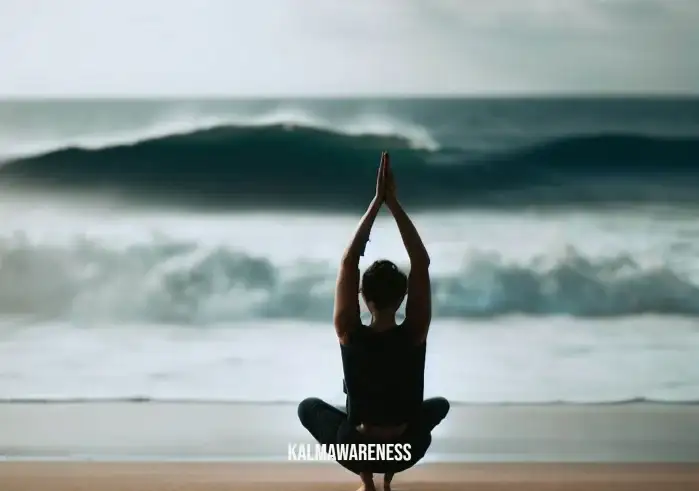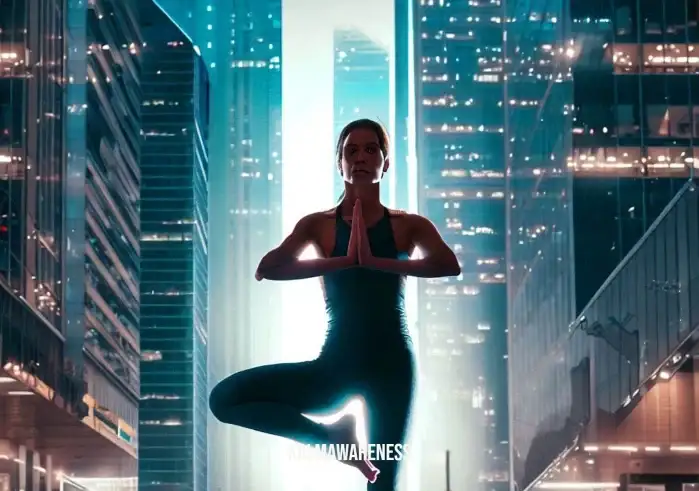Yoga Pose: Exploring the Yoga Crane Pose vs Crow
Welcome to an exciting journey through the world of yoga poses. In this article, we will delve into the fascinating realm of the Yoga Crane Pose and its close cousin, the Crow Pose. Prepare to discover the key differences, benefits, and challenges associated with these invigorating asanas. Whether you’re a seasoned yogi or a beginner on your mat, this exploration will provide insights and guidance to enhance your yoga practice.
Pose Description and Explanation
Let’s begin by understanding the essential aspects of these poses. Refer to the table below for a comprehensive overview:
| Description | Explanation |
|---|---|
| Pose Name | Yoga Crane Pose vs Crow |
| Original Name | Bakasana vs Kakasana |
| Difficulty Level | Intermediate to Advanced |
| Pose Category | Arm Balance |
| Exercise Duration | Beginners: 15-30 seconds<br>Advanced: 1-2 minutes |
Step-by-Step Guide
Now, let’s explore the step-by-step instructions for performing the Yoga Crane Pose:
- Start in a squat position with your feet hip-width apart.
- Place your hands on the mat shoulder-width apart, fingers spread wide for stability.
- Slowly lean forward and position your knees on the backs of your upper arms, close to the armpits.
- Engage your core muscles and shift your weight forward onto your hands.
- Gently lift one foot off the ground, followed by the other, balancing on your hands.
- Keep your gaze focused slightly ahead to maintain stability and alignment.
- Find your balance and hold the pose, breathing deeply.
- When you are ready to release, lower your feet back to the mat and come back to a squat position.
Next Part: Unveiling the Benefits and Challenges
In the next part of this article, we will delve deeper into the benefits and challenges of the Yoga Crane Pose and the Crow Pose. You’ll discover how these poses can enhance your strength, balance, and focus. Stay tuned to unlock the secrets behind these invigorating asanas!

Exploring the Benefits and Variations
In the previous chapter, we learned the fundamentals of the Yoga Crane Pose and its close counterpart, the Crow Pose. Now, let’s dive deeper into the numerous benefits these poses offer, understand who should approach them with caution, and explore variations suitable for different levels of experience.
Benefits of the Yoga Crane Pose vs Crow Pose
- Strengthens the Upper Body: Both the Yoga Crane Pose and the Crow Pose require substantial arm and shoulder strength. As you practice these poses, you engage the muscles in your arms, shoulders, and chest, building overall upper body strength.
- Improves Balance and Focus: Balancing on your hands in the Crane and Crow Poses demands concentration and focus. Regular practice helps improve your ability to find stability and enhance your mental clarity.
- Tones the Abdominal Muscles: The engagement of the core muscles is essential in these poses. Holding the posture requires abdominal strength and stability, helping to tone and strengthen the abdominal muscles over time.
- Boosts Confidence: Achieving and holding these challenging arm balances can boost your confidence and self-esteem. As you witness progress in your practice, you’ll feel empowered and capable of taking on new challenges on and off the mat.
- Enhances Body Awareness: Balancing poses like the Crane and Crow require body awareness and precise alignment. Through regular practice, you’ll develop a deeper connection with your body, improving proprioception and coordination.
- Cultivates Mental Calmness: The focused concentration required in these poses naturally brings a sense of calmness and tranquility to the mind. The combination of physical effort and mental focus can help alleviate stress and promote a state of mindfulness.
Who Should Approach with Caution?
While the Yoga Crane Pose and the Crow Pose offer numerous benefits, they may not be suitable for everyone. It is essential to approach these poses with caution if you have:
- Wrist or Shoulder Injuries: Individuals with wrist or shoulder injuries should exercise caution or consult a healthcare professional before attempting these poses. Modifications or alternative poses may be necessary to avoid further strain or discomfort.
- High Blood Pressure: If you have high blood pressure, it is advisable to avoid holding inverted poses like the Crane and Crow for an extended period. These poses create an additional load on the cardiovascular system, and it’s crucial to prioritize your safety and well-being.
- Pregnancy: Pregnant individuals should avoid inversions and poses that compress the abdomen, including the Crane and Crow. It is best to consult with a prenatal yoga instructor for appropriate modifications and alternative poses suitable for pregnancy.
Variations for Different Experience Levels
Whether you’re a beginner or an experienced yogi, there are variations of the Yoga Crane Pose and the Crow Pose that cater to different levels of experience:
- Beginner Variation: If you’re new to these poses, start by practicing with a block or bolster placed in front of you. This prop provides extra support and stability, making it easier to shift your weight onto your hands.
- Intermediate Variation: As you gain confidence and strength, challenge yourself by attempting the Crane and Crow Poses without any props. Focus on finding balance and maintaining proper alignment as you hold the poses for an extended period.
- Advanced Variation: For those seeking an extra challenge, explore transitioning from the Crane Pose to the Crow Pose and vice versa. This seamless flow requires heightened control, core strength, and advanced arm balance skills.
Remember to listen to your body and respect its limitations as you progress through the variations. It’s important to approach these poses mindfully and prioritize safety.
Tips for a Successful Practice and Conclusion
In the next chapter, we will provide you with valuable tips to enhance your practice of the Yoga Crane Pose and the Crow Pose. Additionally, we will conclude our exploration with a reflection on the overall significance of these poses within the realm of yoga.

Unveiling the History, Spiritual Significance, and Enhancing Your Practice
In the previous chapters, we explored the Yoga Crane Pose and the Crow Pose, focusing on their benefits, precautions, and variations. Now, let’s delve into the fascinating history, spiritual significance, practical tips, common mistakes to avoid, modifications for injuries or limited flexibility, and poses that complement these invigorating arm balances.
The History of the Yoga Crane Pose vs Crow Pose
The origins of these poses can be traced back to the ancient practice of yoga. The Yoga Crane Pose, or Bakasana, finds its roots in Hatha Yoga, a branch of yoga that emphasizes physical postures and breath control. The Crane Pose’s name is inspired by the graceful stance of a crane bird.
On the other hand, the Crow Pose, or Kakasana, is derived from the Sanskrit word “kaka,” meaning crow. This pose has its roots in the traditional practice of Ashtanga Yoga, a dynamic and physically demanding style of yoga.
The Spiritual Significance of the Yoga Crane Pose vs Crow Pose
Beyond their physical benefits, these poses hold spiritual significance in the practice of yoga. They are believed to activate and balance the Manipura Chakra, also known as the Solar Plexus Chakra. This energetic center is associated with personal power, self-confidence, and transformation.
When practicing the Yoga Crane Pose and the Crow Pose, the focused concentration and inner strength required can facilitate the awakening and balancing of the Manipura Chakra, fostering a sense of empowerment and self-awareness.
Tips for Getting the Most Out of the Pose
To enhance your experience and maximize the benefits of these poses, consider the following tips:
- Build Strength Gradually: Approach these poses with patience and persistence. Start by focusing on building arm and core strength through preparatory exercises and foundational poses like Plank and Chaturanga Dandasana.
- Engage the Core: A strong core is vital for maintaining balance and stability in arm balances. Draw your navel toward your spine and actively engage your abdominal muscles throughout the poses.
- Gaze Softly: Maintain a soft and steady gaze slightly ahead to help maintain balance and focus. Avoid fixating your gaze on one spot, as it may disrupt your stability.
- Breathe Mindfully: Deep, steady breaths help calm the mind and support your practice. Remember to maintain smooth, controlled breathing throughout the poses.
Common Mistakes to Avoid
To ensure a safe and effective practice, be mindful of the following common mistakes:
- Collapsing Shoulders: Avoid sinking your shoulders toward your ears. Instead, actively engage your shoulder muscles and draw them away from your neck, creating space and stability.
- Dropping the Head: Keep your neck aligned with your spine and avoid dropping your head or straining your neck. Maintain a neutral neck position to support proper alignment.
- Overexertion: It’s important to challenge yourself, but avoid pushing beyond your limits. Listen to your body, respect its boundaries, and honor the journey of your own practice.
Modifications for Injuries or Limited Flexibility
For individuals with injuries or limited flexibility, modifications can make these poses accessible and safe. Consider the following adaptations:
- Use Props: Place a block or bolster under your forehead or palms to reduce the strain on your wrists or improve stability as needed.
- Partial Crane Pose: Instead of fully balancing on your hands, practice a modified version by resting your knees or shins on your upper arms. Gradually work toward lifting the feet off the ground as strength and flexibility improve.
Poses Complementary to the Yoga Crane Pose vs Crow Pose
To complement your practice and expand your arm balance repertoire, explore the following poses:
- Firefly Pose (Tittibhasana): This challenging arm balance builds upon the foundations of the Crane and Crow Poses, further enhancing arm and core strength.
- Side Crow Pose (Parsva Bakasana): This variation adds a twist to the arm balance, deepening the engagement of the core and oblique muscles.
- Eight-Angle Pose (Astavakrasana): This advanced arm balance combines strength, flexibility, and focus. It challenges the practitioner to balance while twisting the body into a unique shape.





